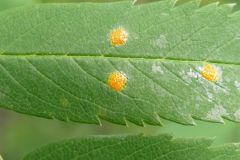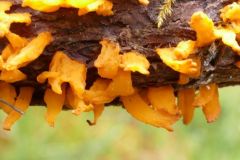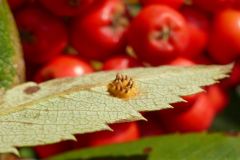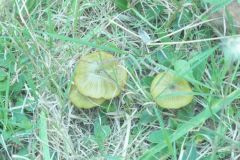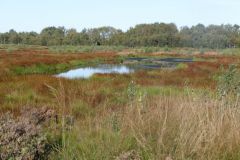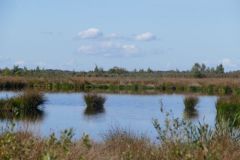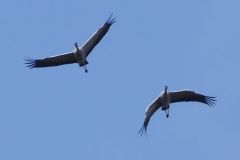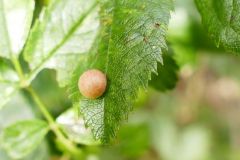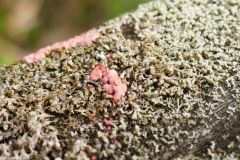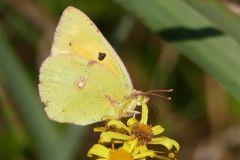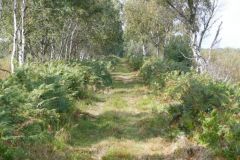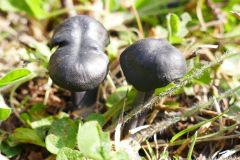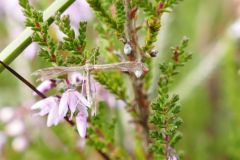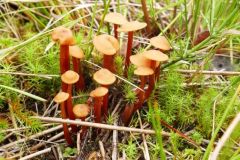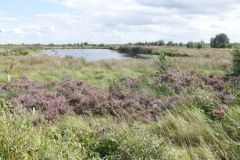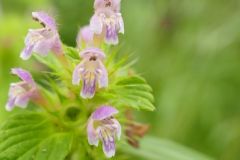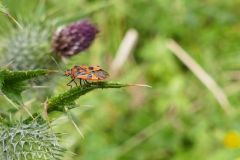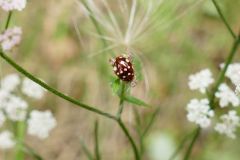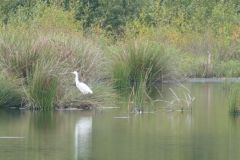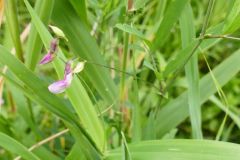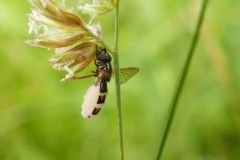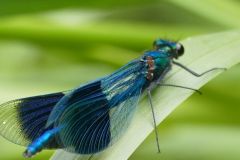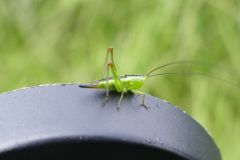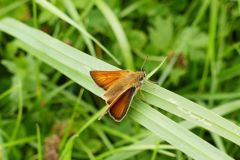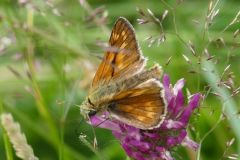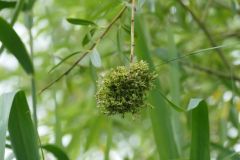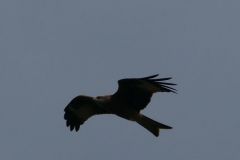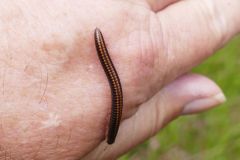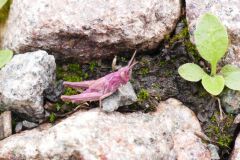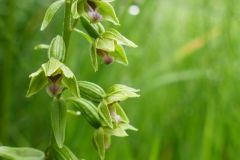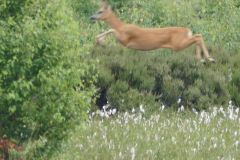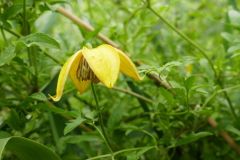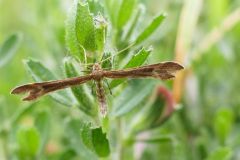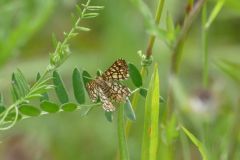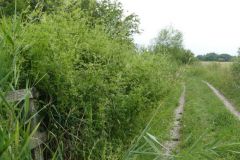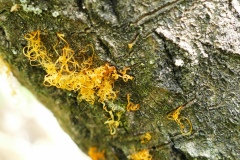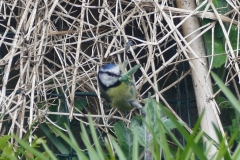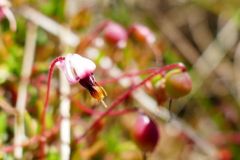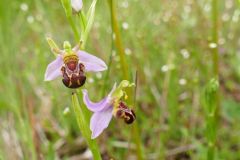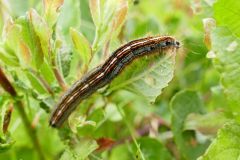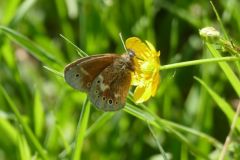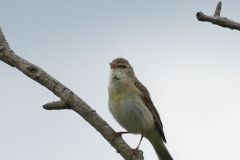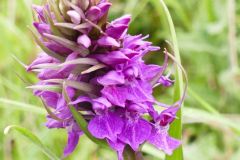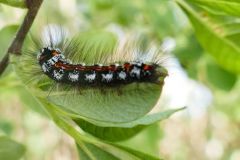27 August 2021
I found a fungus on a Juniper in May. This was interesting enough and I sent a photo. to a fungus expert for an ID. He told me it was Gymnosporangium but there were other species in the family and it would be best if I tried to find its other form, which infects trees such as Hawthorn, Rowan, Apple and Pear. The fungus on the Juniper matures and produces spores which are carried on the wind. When the spores land on a suitable tree they cause a growth on the upper leaf surface, a round yellow blob. After a time this growth produces a Gall, which sprouts “spikes.” These spikes grow and then produce spores. The spores are then carried on the wind and infect Juniper causing the Fungus. A strange species? Photos. show the fungus on juniper, an infected rowan leaf and the gall under the leaf.
Ian
6th October 2020
Here are some more images from Thorne Moors. The green fungus is, according to Martin Warne, named as Mouse Pee Fungus, Entoloma incanum. A photo of Cranes as they fly past overhead. Two views of the moor not often seen by the general public. The gall is Smooth Pea Gall on dog rose. The tiny pink fungus on lichen is Illosporiopsis chrisiansenii.
Most people who visit Thorne Moors, including naturalists, tend to only visit the Southern Canals. The site covers an area of 1900 hectares. New species to the site, as well as new Yorkshire records, are recorded by a small group of dedicated Naturalists every year, in all weathers and at all times of the year.
Ian
11th September 2020
Recent sightings from Thorne Moors.
At first sight I thought the butterfly was a Brimstone.,but as it flew to another ragwort I could see it was not. When I looked in my butterfly book I discovered it to be a Clouded Yellow.
1. Clouded Yellow – Colias croceus
2. Collis Tram
3. Possibly Entoloma nigraviolaceum
4. Sundew Plme Moth – Buckieria paludum
5. An unknown fungus
6. A view of Thorne Moor from the North West
8th August 2020
Sightings from Thorne Moors this week.
Cream Spotted Ladybird; Conizus hyoseyami; Little Egret; Marsh Pea, Lathyrus palustris; Common Hemp Nettle, Galeopsis tetrahit; Fugal fly (Entomophthora muscae).
Ian
17th July 2020
Sightings from Thorne Moors this week.
Banded demoiselle, Long Winged Conehead, Conocephalus discolor ; Essex? skipper, Thymelicus lineola; Large Skipper, Ochlodes venatus; Mossy Willow Gall; Red Kite, Schizophyllum sabulosum:
Ian
10th July 2020
I was with Martin Warnes on Thorne Moors yesterday when Martin noticed a pink grasshopper. The colour is said to be caused by a genetic mutation called Erythrism. This is only the second time I have seen a pink grasshopper
Ian.
4th July 2020
On another visit this week to Thorne Moors I counted the plants in the small Epipactis dunensis colony, there were 18, just coming into flower. On leaving I saw two roe deer. One seemed to be practising for the high jump.
30 June 2020
Walking along the A18, East of the Cumberland Hotel, I noticed a number of Harts Tongue and Wall Rue Ferns growing in old stone walls on the South of the road.
Today I went to look round the old pit tip at Thorne, with Martin Warnes. We found 20+ Crescent Plume Moths, Marasmarcha lunaedactyla, on Rest Harrow plants. They were first found in the area by Martin and Steve Hiner (NE) last year. Also seen was a Latticed Heath moth, Chiasmia clathrata. Walking back along the track from the pit to Thorne Moors we came across a robust Clematis, Clematis tangutica, growing over the fence. There are many Pyramidal Orchids in flower on the pit tip just now.
20th June 2020
I found a fungus on a Downy Birch, in Pony Bridge Wood, Thorne Moors on June 2nd. The image was sent to a Mycologist who thought it was probably Quaternaria quaternata. That species favours Beech. The tree is about 3″ in diameter, giving the “fungus” a size of approx. half an inch. Ian Mcdonald.
8th June 2020
Now I can get back onto Thorne Moor here are a few recent photos
11 April 2020
Watching wildlife in the garden, as travelling to the Moors is banned, I noticed a blue tit kept flying to apple mint and pulling pieces of leaf off. I wonder if it was using the soft leaves for the nest (a box on my neighbours wall) or using the strong smell of mint as an insect repellent? Ian.
